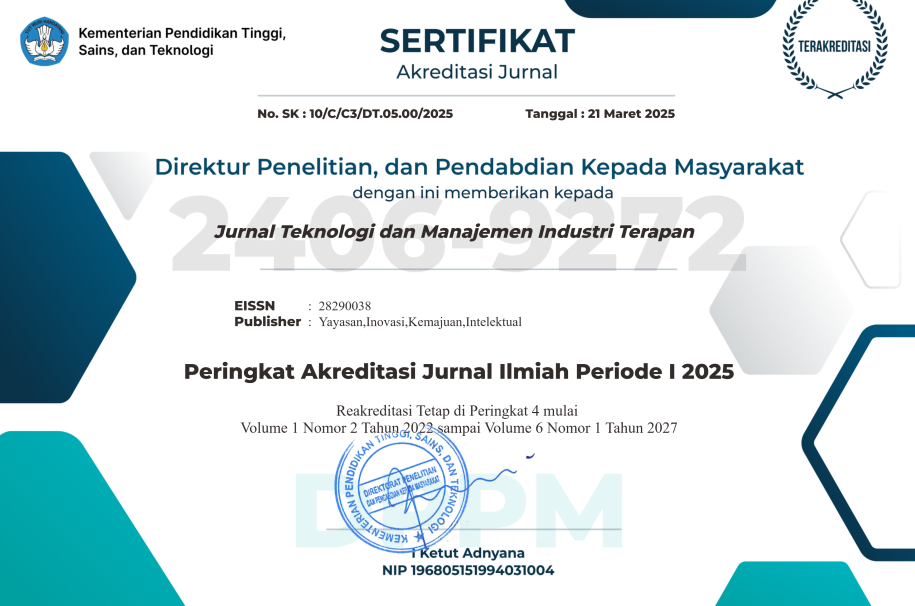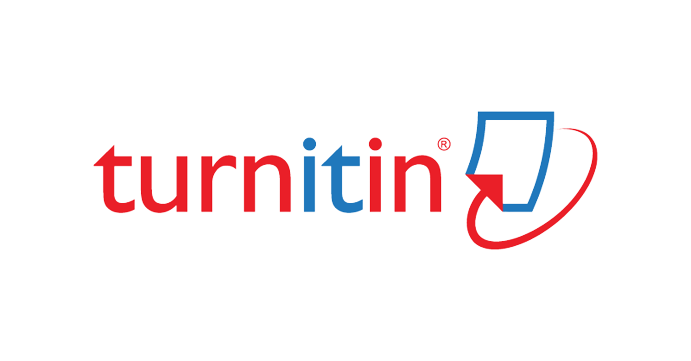The Moderating Role of Electronic Word of Mouth in the Relationship Between User-Generated Content and Purchase Decisions
DOI:
https://doi.org/10.55826/jtmit.v4iI.970Keywords:
Advertisement, Speech Acts, Instagram, ShopeeAbstract
This research is a quantitative study with an explanatory approach, namely an approach that relies on previous research for three purposes, namely: creating hypotheses, creating new variations on hypotheses that are different from previous research, and proving hypotheses. The data used in this study are primary data that researchers obtained from sources that are definitely credible in the form of Three Second customers, with a total of two hundred customers spread throughout Indonesia. The data that researchers obtained were analyzed using the innovative PLS 4.0 analysis tool. The conclusion is explained comprehensively in this section. In the first hypothesis in this article, it can be concluded that it is accepted and proven. This is because the P-values in this article are positive and below the 0.05 significance level, namely 0.007. The results mentioned by the researcher above are in line with a number of previous studies, namely. This means that better user-generated content on a product can make a larger market share, increase product recognition in the eyes of the public, and so on, which can increase Purchasing Decisions. In the following hypothesis, the Electronic-Word of Mouth variable can strengthen or moderate the influence of the User Generated Content variable on Purchasing Decisions because the same thing, namely the P-Value value, is positive and below the 0.05 significance level, namely 0.000. more significant than direct testing of 0.007. Thus, it can be concluded that the first and second hypotheses in this article can be accepted.
References
M. Alrwashdeh, “The effect of electronic word of mouth communication on purchase intention and brand image: An applicant smartphone brands in north Cyprus,” Manag. Sci. Lett., vol. 9, no. 4, p. 17, 2019, doi: https://doi.org/10.5267/j.msl.2019.1.01.
N. Purwaningsih, T. Tarto, and E. O. Candraningsih, “PENGARUH GREEN TRAINING, GREEN RECRUITMENT DAN GREEN TRANSFORMATIONAL LEADERSHIP TERHADAP SUSTAINABLE CORPORATE PERFORMANCE PT ABC Di TANGGERANG,” Dyn. Manag. J., vol. 7, no. 1, p. 114, 2023, doi: 10.31000/dmj.v7i1.7660.
O. Sinaga, H. Irianto, and E. Widiyanti, “Menurut Hasan, WoM merupakan sebuah sanjungan, atau saran yang positif, komentar atau testimonial pelanggan seputar pengalaman pribadi mereka atas layanan jasa serta produk yang memengaruhi sebuah keputusan pembelinya atau perilaku pembelian mereka (Hasan,” AGRISTA, vol. 5, no. 1, pp. 79–88, 2017.
A. Yaylí, “E-WOM: The effects of online consumer reviews on purchasing decisions,” Int. J. Internet Mark. Advert., vol. 7, no. 1, pp. 51–64, 2012.
Faizatul Wafiyah, “PENGARUH USER GENERATED CONTENT DAN E-WOM TERHADAP PURCHASE INTENTION DAN PURCHASE DECISION PADA PEMBELI PRODUK NYRTEA DI INSTAGRAM,” UNIVERSITAS YUDHARTA PASURUAN, 2016.
M. Badir, “The Effect of E-WOM, Ease of Use and Trust on Purchase Decisions (Study on Tokopedia Application Users),” J. Minds Manaj. Ide Dan Inspirasi, vol. 7, no. 1, p. 39, 2020.
I. Sari, T. Rinawati, and C. Rizkiana, “Pengaruh Electronic Word of Mouth (E-Wom) Dan Online Consumer Review (Ocr) Terhadap Keputusan Pembelian Melalui Shopee,” Solusi, vol. 20, no. 2, p. 160, 2022, doi: 10.26623/slsi.v20i2.5147.
Y. Damayanti, “Kajian Literatur Efektivitas Electronic Word Of Mouth (EWom) Dalam Meningkatkan Minat Beli Konsumen Di Sosial Media,” Res. Gate, vol. 2, no. 1, p. 12, 2019.
Lupiyoadi, Manajemen Pemasaran Jasa. Jakarta: Salemba Empat, 2014.
H. Malau, Manajemen Pemasaran. Jakarta: Alfabeta, 2017.
Rangkuti, Riset Pemasaran. Jakarta: Gramedia Pustaka Utama, 2007.
K. Philip, Manajemen Pemasaran: Analisis Perencanaan Implementasi dan pengendalian. Jakarta: Gramedia Pustaka Utama, 2013.
T. . Gruen, “E-WOM: the impact of customer-to-customer online know-how exchange on customer value and loyalty,” J. Bus. Res., vol. 4, no. 2, p. 14, 2006.
Niken Mita Sari, Madnasir, and W. Rosilawati, “Pengaruh User Generated Content Terhadap Keputusan Pembelian dengan E-Word of Mouth sebagai Variabel Mediasi dalam Perspektif Bisnis Islam,” Parad. J. Ilmu Ekon., vol. 8, no. 2, pp. 955–962, 2025, doi: 10.57178/paradoks.v8i2.1163.
P. Kotler, Prinsip-prinsip Pemasaran. Diterjemahankan oleh Bob Sabran. ed. 12 jd. 1. Jakarta: Erlangga, 2008.
Kotler, Manajemen Pemasaran edisi 12 Jilid 1 & 2. Jakarta: PT. Indeks Kelompok Gramedia, 2019.
D. Firmansyah, E. Safrina, and M. Diah, “Jurnal Informatika Ekonomi Bisnis Analisis Celebrity Endorsment terhadap Keputusan Pembelian Pelanggan Online Shop Shopee dengan Minat Beli sebagai Variabel Intervening,” vol. 5, pp. 885–889, 2023, doi: 10.37034/infeb.v5i3.674.
A. f. Alghifari, “Pengaruh Diskon, Kualitas Website, Persepsi Risiko Dan Kepercayaan Terhadap Keputusan Pembelian Pada Online Shop Shopee: Studi Pada Mahasiswa Universitas Muhammadiyah Purwokerto.,” Deriv. J. Manaj., vol. 15, no. 2, pp. 2223–236, 2021.
S. Abdurahman, Metodologi Penelitian. Jakarta: Sinar Grafika, 2016.
Sugiyono, Metode Penelitian Kuantitatif, Kualitatif, R&D. 2019.
Hair, Multivariate Data analysis, Seventh Editions. Prentice Hall: New Jersey, 2010.
A. Ramdayani, “Pengaruh User Generated Content dan Electronic Word of Mouth terhadap Pemenuhan Kebutuhan Informasi Pembelian Produk Jiniso pada Aplikasi Tiktok (Studi Kasus di Universitas Nusa Putra),” UNIVERSITAS NUSA PUTRA SUKABUMI, 2024. [Online]. Available: https://repository.nusaputra.ac.id/id/eprint/1123/1/SKRIPSI_ALDA_RAMDAYANI.pdf
H. Margareth, “PENGARUH LIVE STREAMING DAN CELEBRITY ENDORSEMENT TERHADAP KEPERCAYAAN KONSUMEN DAN DAMPAKNYA PADA KEPUTUSAN PEMBELIAN SHOPEE (STUDI KASUS MAHASISWA PERGURUAN TINGGI SWASTA KOTA MEDAN),” 2017.
M. Sarstedt, C. M. Ringle, D. Smith, R. Reams, and J. F. Hair Jr, “Partial least squares structural equation modeling (PLS-SEM): A useful tool for family business researchers,” J. Fam. Bus. Strateg., vol. 5, no. 1, pp. 105–115, Mar. 2014.
I. Ghozali, Aplikasi analisis multivariete dengan program (IBM. SPSS). Diponergoro: Univrsitas Dipenogoro, 2016.
Downloads
Published
Issue
Section
License
Copyright (c) 2025 Bagus Yunianto Wibowo, Nanang Adie Setyawan, Destine Fajar Wiedayanti, Irin Mirrah Luthfia, Mona Inayah Pratiwi

This work is licensed under a Creative Commons Attribution-NonCommercial-ShareAlike 4.0 International License.


















